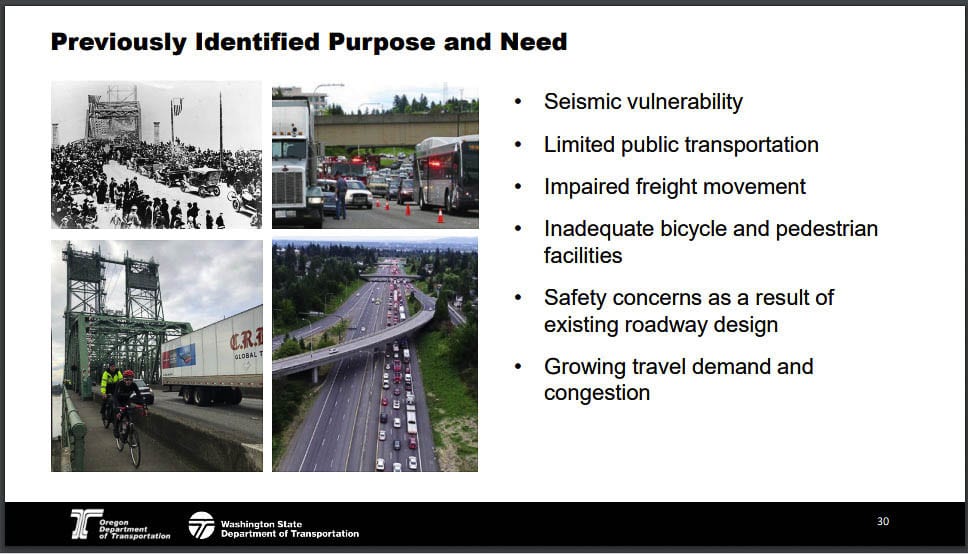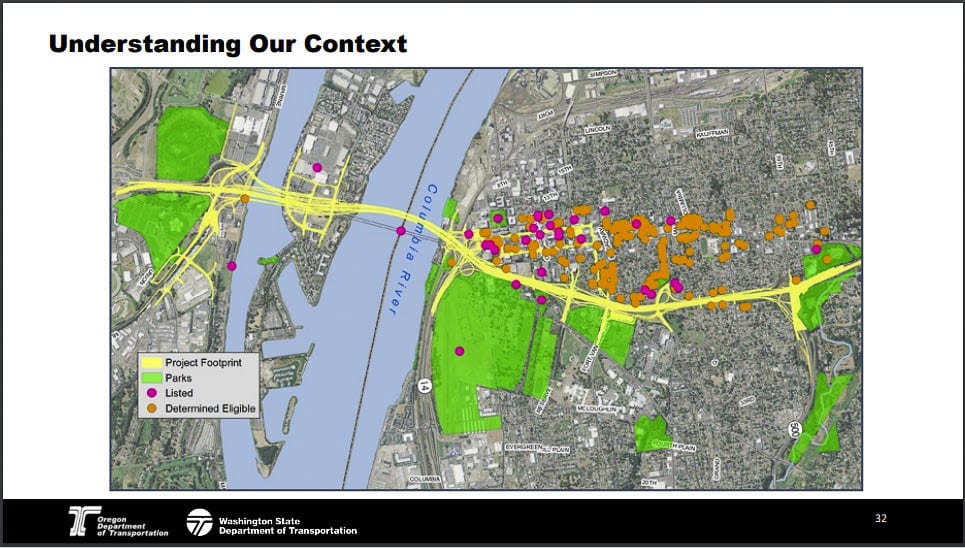There are other transit options according to C-TRAN’s Shawn Donaghy
The Executive Steering Group (ESG) for the Interstate Bridge Replacement Project (IBRP) met on Monday for an update on the project. They approved their Charter, and also approved the creation of two community-based input groups. The ESG also received an update on the NEPA environmental review process.
Program Administrator Greg Johnson provided a review of the Bi-state Bridge Committee meeting of state legislators last week where a preview of the Conceptual Finance Plan was presented. It was formally released to the two state legislatures on Dec 1 along with a progress report.
C-TRAN CEO Shawn Donaghy brought forward an important point regarding transit for the project. ”There was some conversation about the two transportation modes that were listed in the finance plan,” he said. “I want to make sure that we recognize that those are not our only alternatives to the process, and that we will continue to work through those as we move forward.”
There is a six-week timetable to recruit members for a Community Advisory Group (CAG) and an Equity Advisory Group (EAG). Interested citizens can apply through the Dec. 18 online. Those interested in serving on the CAG can apply here. Those interested in serving on the EAG can apply here. They expect to have about 30 citizens on the CAG.
It will be the IBRP team (consultant staff) who will actually select the members of these groups. The ESG will receive the opportunity to approve the final list according to Johnson.

The initial outreach has included over 300 different community based groups. The membership criteria was modified by suggestion of Metro President Lynn Peterson, to include economic considerations along the I-205 corridor. “You can’t separate the two because it’s a system,” she said.
Traffic diversion and economic impacts both during construction and after the new bridge opens need to be considered. “Whether it’s during construction or operation and maintenance of the new bridge, there will be diversions,” Peterson said.
Tolling issues and amounts charged will likely impact traffic diversion once a new, tolled bridge opens. With Oregon planning to charge tolls on both I-5 and I-205 “at the border,” an additional toll for the Replacement Interstate Bridge would likely cause a diversion to I-205.
“We have talked about diversions within the neighborhood and how important that is,” Peterson said. People driving the distance between the two states will have a decision to make of which corridor they use.
“Whether the diversion actually exists and how it can be impacted as an important part of the conversation that was left out and then left without answers last time,” said Peterson.
The two community based groups will provide input to the ESG on both the project’s Purpose and Need statement as well as their Vision and Values statement.
The IBRP staff pointed out the Purpose and Need section is in many ways “the most important chapter of an Environmental Impact Statement.” It explains what is being addressed and why it is being considered. It establishes why financial investment is necessary and justifies why any
unavoidable environmental impacts are warranted. FInally, it informs alternatives consideration, in-depth analysis, and final selection of the preferred alternative.
The staff anticipate the March ESG meeting will focus on the Purpose and Need statement. The April meeting will focus on the Vision and Values statement. Johnson shared that they hope to have the final modified version of each statement completed by May.
The previous Purpose and Need statement included the following: Seismic vulnerability,limited public transportation, impaired freight movement, inadequate bicycle and pedestrian facilities, safety concerns as a result of existing roadway design, growing travel demand and congestion.

The IBRP staff has had discussions with the Federal Highway Administration (FHWA) and the Federal Transit Administration, and is focusing on our current context. Those include changes to project area (real property and their uses); changes in regulations (Endangered Species Act, US Coast Guard Bridge permits, etc.); change in project needs (transit, interchange designs, vision and values); and previous work to define constraints and commitments considered in the Columbia River Crossing (CRC).
The ESG received a review of the CRC’s efforts, including a review of what was required in the NEPA environmental review. They highlighted the “NEPA umbrella” that includes a host of federal and state laws and regulations.
Ultimately, the final revised Purpose and Need statement as well as the Vision and Values statement will be determined with input from the Executive Steering Group, the bi-state legislative committees, the two advisory groups, and community input.
During public comment, retired economist Joe Cortright shared his perspective that there are several problems with the current discussion. He said ODOT and WSDOT were falsely claiming that there’s a need to repay the federal government $140 million. “If we select the no build alternative FHWA regs provide there is no repayment liability,” he said.
Cortright had reviewed the conceptual finance plan. He said there is a $1.1-billion arithmetic error in the financial gap estimate that was provided to the legislative committees. He said they mistakenly compared the low and low estimates of costs and revenues, and the high and high. “You should compare the low revenue estimate with the high cost estimate.” he said. “That produces an additional $1.1 billion gap in the financing or up to $3.4 billion.”
Another problem he indicated was they used a 1.9 percent inflation rate to inflate the old CRC numbers. “The real highway cost construction index has been rising at 3 percent a year over the last decade,” he said. “That would add another $600 million to another $1 billion to the price of this project.”
Cortright published a more extensive explanation of his findings, which can be read here.




